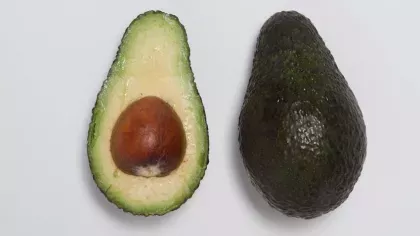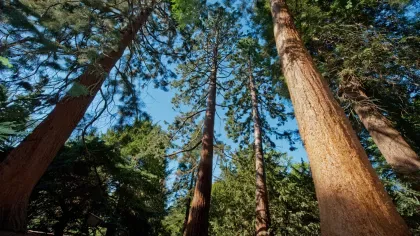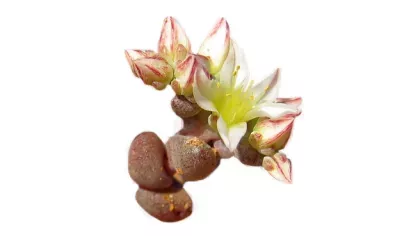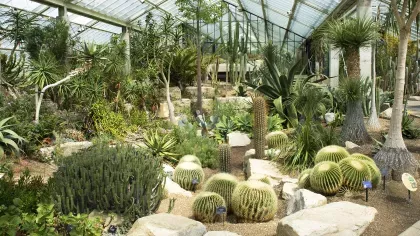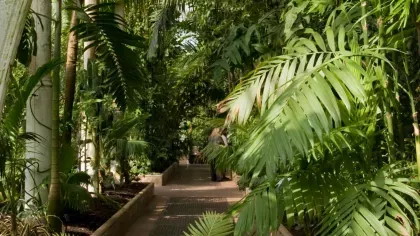
Saguaro
On this page
Iconic symbols of the American desert, saguaro cacti can grow over 5 metres tall and live for over 100 years.
You cannot miss these towering giants in the deserts of south-western United States and north Mexico.
Having provided food and materials to native peoples for thousands of years, saguaros form a vital part of desert life.
They are also home to many birds — woodpeckers create new nest holes in the cacti every year, leaving old ones behind for other birds like wrens and owls to inhabit.
Large saguaros are estimated to weigh between 3000 to 4000kg. Over 85% of that weight comes from water stored in the stem.
Plant description
Saguaros are tree-like cacti that grow up to 15m tall. They have strong, thick spines on a vertically-ridged trunk, and are more likely to grow branches as they age. Large, white, funnel-shaped flowers appear just below the top of saguaro stems between April and June, opening during the night. Their smooth, oval, fleshy fruits ripen to a red colour between May and July once the saguaro is over 30 years old.






Plant uses
Cultural
The saguaro plays a central role in Tohono O’odham culture — their calendar starts with the month of the saguaro fruit harvest. Wine made from saguaro fruit is drunk at ceremonies to welcome the monsoon rains. Tohono O’odham creation stories even tell of how saguaros were originally humans and must be treated with due respect.
Saguaro cacti are popular in desert gardens as ornamentals.
The saguaro flower is the state flower of Arizona.
Food and drink
The Tohono O’odham turn saguaro fruits into jams and syrups, as well as ceremonial wine.
In the past, saguaro seeds were ground into meal or pressed for oils. Today, they are mostly used as chicken feed.
Materials and fuels
In the past, the internal wooden ‘ribs’ of dead saguaros provided building materials and firewood for Native American people.
The Tohono O’odham create a tool called a kuipaD from the wooden ribs of the saguaro to harvest its fruits.
Saguaro boots (hard shells of wood formed when woodpeckers create holes in saguaros) are used by Seri people as water containers.
Did you know?
The scientific name of the saguaro, Carnegiea gigantea, refers to philanthropist Andrew Carnegie and the giant size of the cactus, respectively.
The tallest living saguaro cactus is over 10m tall and estimated to be over 200 years old. The tallest saguaro ever recorded was just under 25m but fell during a windstorm in 1986.
The tap root of the saguaro extends around 1m below the ground. Their other roots are shallow, but can extend outward as far as the plant is tall
The ridges on the stem of saguaro cacti allow for expansion and contraction as the plant absorbs water after rain.
While not categorised as threatened by the IUCN, the saguaro is protected under Arizonan state law and Mexican national law, due to their importance in local cultures.
Saguaro flowers open at night, providing food for nectar feeding bats who in turn pollinate the flowers.
Where in the world?

Well-drained desert.
Find it in our gardens
Kew Gardens
A botanic garden in southwest London with the world’s most diverse living plant collection.
Location
Princess of Wales Conservatory
View map of Kew Gardens